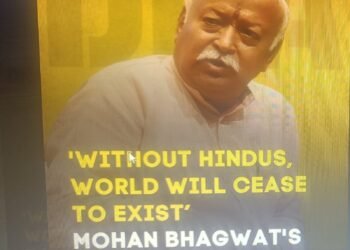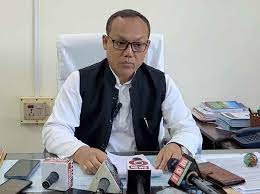Decades after the first call for independence, the Naga struggle stands divided — its leaders at odds and its purpose lost in layers of politics, identity, and negotiation fatigue.
By H. S. Benjamin Mate
For more than half a century, the Naga militant leadership—particularly the NSCN-IM—has projected the idea that the Naga people constitute a historically sovereign nation forcibly annexed by India. This narrative, rooted in selective readings of colonial ethnography and missionary writings, has become the emotional and ideological foundation of the Naga armed movement.
Yet as senior Indian lawyer and human-rights advocate Nandita Haksar recently reminded in her interview with Force, the claim of a “sovereign Naga nation” is both historically unfounded and politically delusional. Haksar argues that sovereignty, as invoked by Naga separatist leaders, rests on romanticised notions of an ancient political unity that never existed. The British themselves never recognised a single “Naga nation”; rather, they dealt with dozens of independent hill villages, each self-governing and often at war with its neighbours.
Haksar’s Challenge to the NSCN-IM Narrative
Haksar dismantles two pillars of the NSCN-IM’s ideology:
1.Sovereignty as Pre-existing: She notes that no historical record supports the idea of a unified Naga polity before British rule. Fragmented village-states cannot be retroactively elevated into a nation-state merely because they share ethnonymic labelling.
2.Uniqueness as Superiority: While acknowledging the distinctiveness of Naga culture, Haksar rejects the militant claim that “uniqueness” demands exclusive political recognition outside India’s constitutional framework. Distinctiveness, she insists, does not equal separateness; it deserves protection, not secession.
Her intervention strips away the mystique surrounding Naga sovereignty and reframes it as a negotiation strategy rather than a historical truth.
A Patchwork of Tribes, Not a Nation
The rhetoric of “Naga unity” conceals profound dialectal, cultural, and ethnic dissimilarities among the more than 30 groups classified under the Naga label.
•Mutual unintelligibility: A Tangkhul cannot naturally converse with an Ao, a Sema, or a Konyak without translation. Linguists classify Naga dialects into several unrelated branches within the Tibeto-Burman family, meaning they lack a common linguistic core.
•Cultural variance: Marriage customs, funeral rites, tattoo traditions, and agricultural rituals differ dramatically from tribe to tribe.
•Fragmented identities: Many tribes historically refused to call themselves “Naga”; the term itself was an exonym imposed by outsiders, later adopted by militants to forge an artificial unity.
Even within Nagaland state, this diversity generates friction. Rival groups often accuse each other of dominance, corruption, or betrayal of the collective cause. Far from a cohesive nation, the so-called “Naga family” remains a mosaic of communities with overlapping yet distinct histories.
The Kuki-Chin-Mizo Contrast: A Genuine Cultural Continuum
In sharp contrast stands the Kuki-Chin-Mizo (Zo) world—a trans-border community spread across India’s Northeast, Myanmar, and Bangladesh. Despite colonial boundaries, the Zo peoples share:
•A single linguistic continuum derived from Old Kuki-Chin, enabling mutual intelligibility from Manipur’s hills to Mizoram and Chin State.
•Common clan genealogies linking tribes such as Mate, Thadou, Hmar, Paite, Zou, and Lai.
•Shared oral traditions, customary law, and social institutions, including chieftainship, dormitory systems (zawlbuk), and similar marriage norms.
•Cultural unity expressed through song, dress, and identity narratives around Zo/Zomi/Mizo nationhood.
Unlike the fractured Naga narrative, the Kuki-Chin-Mizo identity is organically cohesive, not ideologically manufactured. It evolved from lived history, kinship, and shared language—attributes that modern nationhood normally requires.
Delusions of Grandeur and Their Consequences
The NSCN-IM’s insistence on Naga sovereignty and “unique history” has created an ideological echo chamber that alienates neighbouring communities and even divides Nagas themselves. Each failed negotiation cycle deepens disillusionment among ordinary villagers who crave peace, roads, and education rather than grandiose political abstractions.
Moreover, the group’s expansionist concept of “Nagalim”—claiming territories across Manipur, Assam, Arunachal Pradesh, and even Myanmar—ignores the equally legitimate ancestral rights of Kuki-Zo and other hill communities inhabiting those regions. It has generated ethnic tension and suspicion, undermining the very idea of coexistence.
As Haksar observed, the NSCN-IM’s narrative transforms what should be an intra-state negotiation on autonomy into an imaginary international dispute. The result is stalemate, fatigue, and growing irrelevance.
A Realistic Path Forward
Haksar proposes a return to constitutional pragmatism—maximising autonomy within India’s federal structure rather than chasing mythical sovereignty. This would include:
•Strengthening the Autonomous District Councils under the Sixth Schedule or similar models.
•Ensuring customary law and land rights for all hill tribes, not only those under the “Naga” label.
•Promoting inclusive dialogue among Naga, Kuki-Zo, and other tribes to define shared developmental goals rather than competitive nationalism.
The Naga movement, once an emblem of anti-colonial assertion, now risks becoming a monument to historical misreading.
The moral clarity of Haksar’s position lies in separating heritage from hegemony. Respect for Naga identity does not require believing in a fantasy of ancient sovereignty. True peace in the Northeast will come not from sustaining illusions of exclusivity but from embracing coexistence built on cultural respect, mutual recognition, and equitable development.
The Naga militant elite may cling to the mirage of a lost kingdom, but history—and reason—show no evidence that such a kingdom ever existed. The future of the hills lies in partnership, not in the perpetuation of myths.
(The writer is chairman of the Kuki Organisation for Human Rights Trust)













